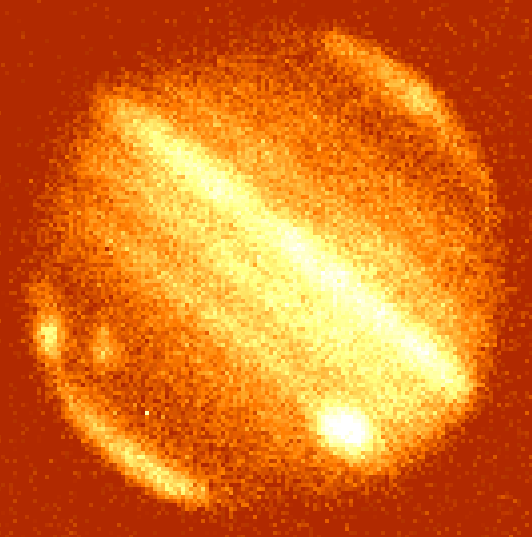

Beginning at 1994 Jul 17 7:15 UT, the NASA/Infrared Telescope Facility observed the development of a bright spot on Jupiter associated with the impact of fragment C. The NSFCAM near-infrared camera took 0.9-sec integrations every 3.6 seconds at a wavelength of 2.248 +/- 0.011 microns. Starting at 6:51 UT, the camera recorded Io and Europa, searching for a flash; no flash was obvious but the data are yet to be photometrically reduced. At 7:15 the telescope moved to Jupiter, and detected both the remnant of the A impact, with a surface brightness similar to that of the south polar hood at this wavelength, and a dim spot from fragment C. By 7:18, site C was considerably brighter than site A, but by 7:28 site C had faded to about site A's brightness, and continued to fade until about 7:40, when it was considerably fainter.
The accompanying image was taken at 8:18 UT at a wavelength of 3.8 microns. Jupiter's south pole is in the lower left corner. The Great Red Spot, white in this image, is the large oval on Jupiter's east limb. The familiar atmospheric bands are also visible. On the left edge of the image are two spots. The bright spot on the limb is site C; the dimmer spot closer to the center of the planet is site A, from an impact about 11 hours earlier. This wavelength is sensitive to relatively high altitudes, and site C is still bright at this wavelength.
NASA/IRTF Comet Collision Science Team
![]() Images, Images, Images
Images, Images, Images
